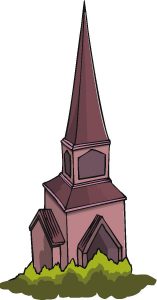Genesis 6:2, Sons of God. We find here an interesting construction in the Hebrew text. Literally, the Hebrew reads, “sons of the gods” or beney–ha-elohim. Usually, the word elohim, when referring to the Creator, doesn’t have the definite article, but simply Elohim. The word elohim not only can refer to the Godhead, but can also mean “angels, gods, rulers or judges.” The phrase, “the gods/ha-elohim” referring to pagan demon-deities is also found in Exod 18:11, “Now I know that the LORD is greater than all the gods/ha-elohim; for in the very thing in which they behaved proudly, He was above them.” Is it possible then that the phrase, “sons of the gods” in this verse can refer to fallen angels? I believe so.
Genesis 6:3, My Spirit shall not strive [Heb. deen]. The LXX, Targums, Aramaic and Latin Vulgate all say abide instead of strive, which is an alternate translation from the MT. This is the translation that Philo presumes in his commentary on this passage (Allegorical Interpretation, “On the Giants,” chap. V.19). From this verse based on this alternate translation, it appears that the Spirit of Elohim was endeavoring to convict man of sinfulness and bring him back to the paths of righteousness, but that man was so evil and reprobate that Elohim gave up on this endeavor and had no choice but to pronounce divine judgment upon man as the final solution in dealing with the problem. Perhaps this gives us a clue as to what the “restrainer” of 2 Thess 2:7 is that Elohim will take away from the earth before the apotheosis of evil occurs in the last days just prior to Elohim pouring out his divine wrath on mankind as foretold in the Book of Revelation and elsewhere.
Genesis 6:4, Giants. Heb. Nephilim. This Hebrew word is found only one other place in the Bible. This is in Num 13:33 where it is used twice and where the nephilim are called to the descendants of Anak (see also Num 13:28; Deut 9:2; Josh 15:14; Judg 1:20). Scholars most often translate this word either as giants, mighty ones or fallen ones. Scholars disagree as to meaning of the root form of this verb and whether the stem means “those that cause others to fall down” or “fallen ones.” BDB confesses that the basic etymology of the word is questionable. At issue, according to The TWOT, is whether the root of nephilim is nepel meaning “untimely birth or miscarriage” (resulting in the production of superhuman monstrosities), or the more likely from the root napal, which relates to other Hebrew words meaning “be wonderful, strong or mighty.” The LXX (as apparently do the majority of the Targums) translates nephilim as giants, though The TWOT admits this may be misleading. This word is of unknown origins and may even mean “heros” or “fierce warriors.”
Adding to the confusion of this passage is the ambiguity as to whether the nephilim are the sons of Elohim or their offspring.
Whatever the meaning of nephilim and/or sons of Elohim may be, two schools of thought have prevailed in Jewish and Christian circles as to who these people were. One line of reasoning asserts that they were the children of Seth, while another presents the idea that the sons of Elohim were the offspring of sexual unions between fallen angels or demons and the daughters of men (called incubus) resulting in half-breed demon-humans (called Continue reading





